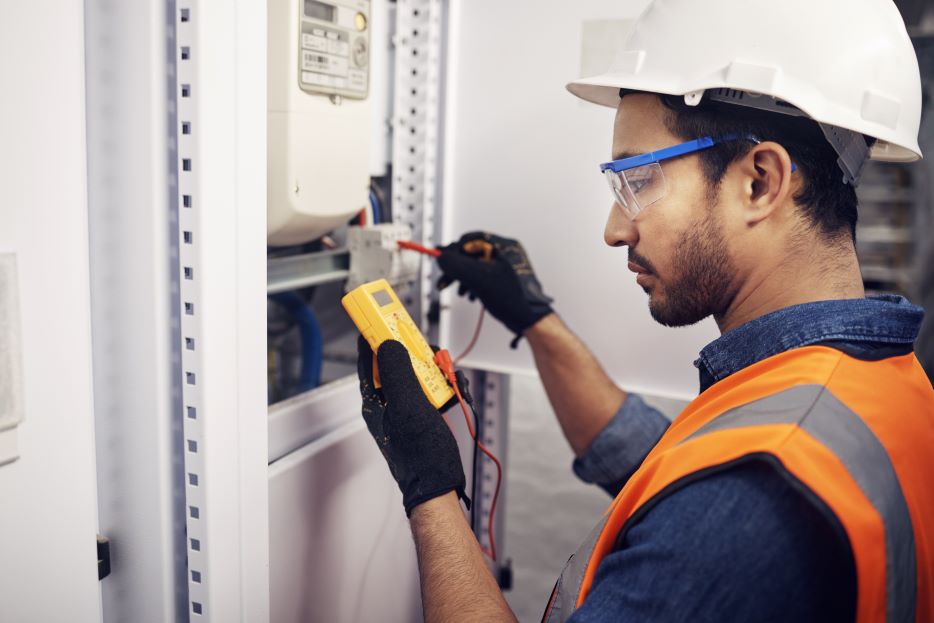The U.S. Department of Housing and Urban Development (HUD) has recently issued clarifications and modifications to the National Standards for the Physical Inspection of Real Estate (NSPIRE) standards. Following extensive feedback from HUD partners, industry stakeholders, and the public, the final NSPIRE Standards Notice focuses on areas of electrical safety and Heating Ventilation and Air Conditioning (HVAC) issues. We’ve done our best to summarize these updates to the NSPIRE standards for electrical and HVAC systems.
NSPIRE Electrical Safety Standards
HUD has made notable modifications in areas concerning electrical conductors and Ground-Fault Circuit Interrupter (GFCI) or Arc-Fault Circuit Interrupter (AFCI) outlets or breakers.
Based on feedback received, HUD clarified that a missing lightbulb will not be cited as an exposed conductor, as this condition does not pose a systemic safety concern. However, a missing lightbulb could be cited as an inoperable fixture under the Interior Lighting Standard if not replaced during inspection.
HUD relocated the unprotected outlet Deficiency to the Electrical—GFCI or AFCI Standard to ensure compliance with the final NSPIRE rule. An unprotected outlet is defined as one within six feet of a water source without a GFCI. Commenters stressed the importance of clarifying that only active leaks should be cited as deficiencies, to which HUD agreed, adding that leaks near waterproof components would not be cited.
The department clarified the term “unprotected” in the GFCI standard to refer to an outlet that isn’t GFCI protected. Additionally, HUD will allow inspectors to use either a receptacle tester with a GFCI test button or an integral device tester during the inspection process.
HVAC Standards
On the HVAC front, HUD was advised to adopt standards from the International Energy Conservation Code (IECC) and the American Society of Heating, Refrigerating, and Air-Conditioning Engineers (ASHRAE)’s Climate Classification for Building Energy Codes and Standards. Despite appreciating the technical quality of the document, HUD pointed out that it doesn’t cover all jurisdictions under NSPIRE.
Instead, HUD will require permanent heating sources in all locales, except for Hawaii, Puerto Rico, Guam, U.S. Virgin Islands, American Samoa, and the Commonwealth of Northern Mariana Islands, in line with IECC regulations. These locations are classified as tropical per the IECA designation, thus don’t require permanent heating.
HUD also clarified that the NSPIRE inspections are meant to ensure heating is available when required, even if inspections are conducted during warmer months. The department agrees that while temperature needs may vary for tenants with disabilities, any additional inspection time or burden on the inspector due to increased instrumentation requirements would be offset by improved safety and health conditions in the home.
Space Heaters and Permanently Installed Heating Sources
Addressing the comments regarding space heaters, HUD reiterated the potentially serious health risks associated with unvented space heaters. In particular, a commenter highlighted the issue that space heaters can interfere with a building’s internal thermometers, leading to uneven heating. This can cause some areas to be too cold or too hot, resulting in inefficient energy use and potentially impairing the overall energy efficiency of the building.
In response to a commenter’s observation that space heaters are allowed in some jurisdictions, HUD acknowledged this fact but underscored the significant health and safety risk of unvented fuel-burning space heaters. In line with this, HUD emphasized the prohibition of unvented space heaters, as they can cause carbon monoxide build-up, which can lead to severe health issues, and even death, if not properly ventilated. This assertion is in line with their mandate to ensure health and safety standards in all HUD-assisted housing.
Permanently Installed Heating Sources
Turning to the topic of permanently installed heating sources, HUD provided further clarification on its definition in the light of the comments received. Commenters suggested distinguishing “permanent” from “temporary” or “portable” fixtures, specifying that a permanent fixture would involve a “hard” mounting and would be directly wired to a power source or a dedicated breaker.
In agreement with these suggestions, HUD defined permanent heating sources as systems that are neither temporary nor portable and are wired directly to the building’s power source. This includes central systems, baseboard heating, and permanently affixed in-wall units, but not cooking appliances or portable heaters.
A specific comment pointed out that while the International Property Maintenance Code (IPMC) does not define “permanently installed heating facilities,” it does list items that may not be compliant with the heating facility requirement, including “cooking appliances,” “portable unvented fuel-burning space heaters,” and “one or more portable space heaters.” HUD agreed with this view, indicating that power source on a dedicated breaker is part of the definition.
Additionally, HUD confirmed that a fireplace would not be considered a permanent heating source. Permanent heating sources, according to HUD, should typically be self-fueled, permanently affixed within the unit or building, safely connected to the unit or building electrical system, thermostatically controlled by the unit or building, and appropriate for the size of the unit. These definitions and clarifications have been integrated into the NSPIRE Heating, Ventilation, and Air Conditioning (HVAC) Standard.
Preparing for NSPIRE Inspections
These clarifications to the NSPIRE standards demonstrate HUD’s commitment to refining and enhancing housing quality standards. The attention to detail reflects a thorough consideration of public and stakeholder feedback, with a clear focus on enhancing resident safety and health outcomes.
As a leading player in the sector, The Inspection Group has established a reputation for its deep understanding and expertise in HUD’s REAC inspections. We are committed to helping our clients navigate the often complex and nuanced requirements and expectations set out in these inspections. With the implementation of HUD’s new NSPIRE protocols, our role has never been more critical.
At The Inspection Group, we offer comprehensive consulting services tailored to suit each client’s specific needs. We provide guidance through every step of the process, ensuring our clients understand the requirements of the NSPIRE protocols and how to implement them effectively.





